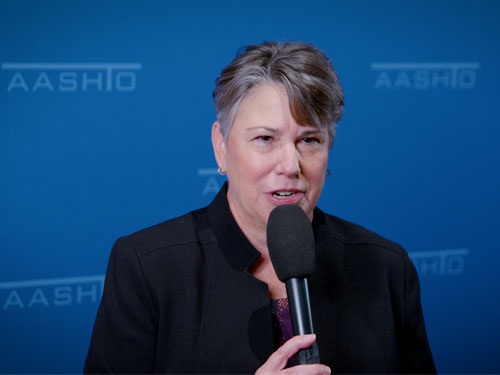An information session held during the National Governors Association 2023 Annual Meeting delved into ways governors can help the private sector safely accelerate work on a variety of infrastructure projects.
[Above photo by Ian Wagreich for the NGA]
During NGA’s Annual Meeting in Atlantic City, NJ, Oklahoma Governor Kevin Stitt (R) and North Carolina Governor Roy Cooper (D) hosted a panel that explored strategies for speeding up the deployment of funds from the Infrastructure Investment and Jobs Act or IIJA and the Inflation Reduction Act as well as streamlining the permitting process for a variety of projects.
[To view the entire session, view the video clip below]
“The United States is among the slowest nations in the developed world in approving and completing infrastructure projects – particularly when it comes to energy,” Gov. Stitt said during his remarks. “Permitting reforms approved in the recent debt ceiling legislation are a good start, but much more remains to be done.”
For example, he said energy stakeholders in his state have shared with him that it “takes 10 years to permit and 6 months to build” critical energy projects of all types.
Gov. Cooper emphasized the importance of infrastructure – particularly high-speed internet – to business growth and thus why there is so much focus on reforming the permitting process.
“Right now, we have a generational opportunity to invest in infrastructure across this country,” he explained. “We’ve had plans before about what we needed to do. Now we actually have the funding to do it. [But] we have permitting challenges. There is a way to do all this: to protect our air and water, and to make sure permitting moves faster.”
Tony Lewis – regional vice president for Verizon and one of the private sector companies participating in the NGA’s panel discussion – stressed that streamlining the permitting process “is absolutely essential” to get new broadband networks built.
“Part of the problem we all encounter is forces of uncertainty: We have got to find ways to move from step one, and then step two, and then step three,” he explained “So often, we see the big problem and wring our hands and say ‘we’re going to have to do these 50 things’ when there’s always a first step. I would encourage us to always look for that first opportunity, and that first opportunity can create momentum that’s necessary to start to move the project forward.”
Lewis added that litigation can slow that process “to a crawl if we’re not careful. If we’re true partners, there are always solutions. But taking the first solution as litigation cannot be the way to ensure that the people who need this the most get it.”
Utah Governor Spencer Cox (R) emphasized that point in his remarks on the panel. “We got some of the low-hanging fruit [regarding permitting reform]. We are going to get some sequential decision making, some shot clocks put in place to do that more quickly,” he said. “But the endless litigation – a lot of what takes so long to move these projects forward is just litigation.”
Gov. Cooper pointed out that one of the many strengths governors possess to address this issue is the ability to bring together all the disparate groups involved in the infrastructure project approval process to find ways to safely speed things up.
“We have the opportunity to bring in the local governments, the private businesses, the federal government and the regulators to get this done,” he pointed out. “We have an unprecedented opportunity here, and it’s up to us to make sure it gets done efficiently, effectively, and as quickly as possible.”
 Top Stories
Top Stories
USDOT Makes $1.5B Worth of BUILD Grants Available
December 19, 2025 Top Stories
Top Stories

